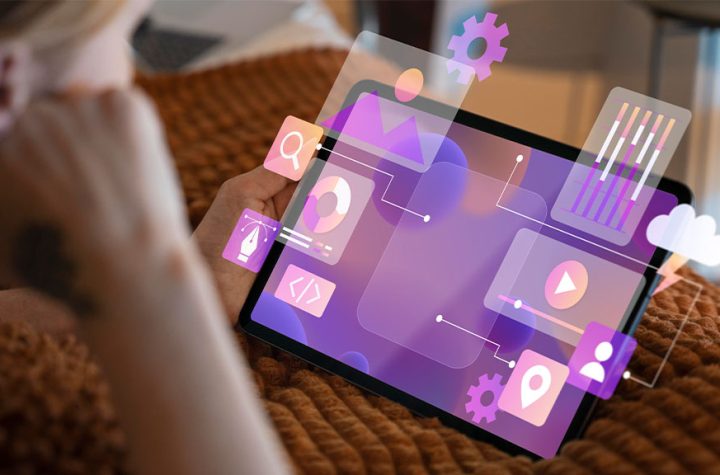
The sale, production, and distribution of food are all influenced by food tech, which includes any technological advancement that enhances these processes.
Although this phrase may sound novel, the relationship between technology and food dates back to the early 1800s, during the Industrial Revolution. This period paved the way for modern farming practices and ultimately led to the development of industrialized agriculture. Leaders in the food business and innovators collaborated throughout this time to boost output and quality. Artificial fertilizer, insecticides, electric power, and introducing horse-powered and steam-powered equipment were all significant advances.
However, with big data, artificial intelligence, and the Internet of Things (IoT), food technology has emerged as its industry in recent years. By incorporating the Internet of Things (IoT) into every step of the food production process, food tech makes the food sector more environmentally friendly.
How IoT Can Help the Food & Beverage Industry
Are you dealing with a particular food & beverage business specifically in Dubai? Do you have the desire to expand your business in entire market? If so, one of the best option is to hire a trustworthy IoT development company in UAE. Below, are a few supporting points that will enable you to know in which ways IoT can assist the food & beverage industry, so let’s have a look at them.
#1: Streamlined Logistics & Operational Efficiency
Food producers must prioritize logistics simplification and operational effectiveness to stay in business. Manufacturers may save money, time, and energy by implementing Internet of Things technologies. Workflow integration, system interoperability, process standardization, and automation are crucial.
When businesses adopt a data-driven logistics strategy, they can monitor performance over time and make adjustments to increase productivity. In the long term, companies benefit from this preventative measure of recognizing potential problems and hazards across the supply chain.
#2: Production & Processing
Internet of Things devices are useful at this stage of food production because of their ability to monitor and foresee the need for repairs to factory equipment. Time and resources are conserved because breakdowns and disruptions are avoided. Overall equipment effectiveness (OEE) is improved due to preventative maintenance rather than emergency fixes.
With the help of smart valves and actuators, manufacturers may optimize their regulatory procedures and product quality by keeping tabs on the temperatures, flow rates, and distributions of ingredients throughout the production stage. Manufacturing facilities that produce various products and hence require rapid, effective product switchovers can benefit greatly from this technology. For instance, calibrated smart valves keep food quality consistent by identifying and rejecting any raw materials or finished goods that don’t meet quality standards.
#3: Warehouse & Inventory Management
Using IoT sensors, inventory can be monitored in real-time, even in a warehouse. Potential risks can be recognized and analyzed before products are sold or shipped by monitoring their exposures, such as moisture or sunshine. With the help of IoT automation, warehouses can be divided into zones for storing food to protect it from improper handling and pests. Rather than relying solely on visual inspection, problems can be pinpointed with greater accuracy by utilizing mobile robots or ultrasonic detection systems.
Food producers and distributors can improve order fulfillment and supply chain efficiency in real-time with the help of inventory tracking devices placed in warehouses. This includes optimizing everything from storage space to loading speeds based on what is available. Vision picking’ is a well-known example of this, and it refers to the employment of automated guided vehicles (AGVs) or robots to remove items from warehouse storage. Overstocking and waste can be avoided, and money can be saved with the help of IoT devices that monitor inventory levels and send out alerts when products are nearing expiration. Manufacturers of perishable goods can monitor consumer patterns and plan for the future with the help of data gleaned by pressure-sensitive sensors. This is especially useful for goods that fluctuate in availability throughout the year, like cocoa in the weeks leading up to Christmas.
#4: Product Packaging & Delivery
There can be no downtime in the packaging process. For food producers who buy their packaging from outside suppliers and incorporate it into their own IoT manufacturing processes, this can provide a unique set of challenges.
Products and packaging are vulnerable to damage during shipping and delivery. Using data gathered by the Internet of Things sensors, manufacturers can foresee potential problems and take preventative action. Similarly, data points can be used to evaluate and optimize production line times, which can significantly impact a business’s ability to meet order deadlines.
Companies can implement digitally integrated supply chain networks, including suppliers, wholesalers, carriers, and operators, to guarantee smooth delivery. Radiofrequency identification (RFID) and global positioning system (GPS) systems are two of the most common logistics technologies, allowing businesses to track their products wherever they go.
Challenges in the F&B Industry and IoT Solutions
Problems abound in the food and drink business, causing unnecessary resource losses. The food and drink business faces several common issues. But, you’ll find several businesses who don’t want to confront such sort of unexpected challenges. For this, what can they do? Well, an ideal way to tackle or come out of these problems is to take the advantage of the decentralized services offered by a reputed blockchain IoT development company.
Let’s have a close look at the challenges in the food & beverage industry…
- Complex Data Sorting
Profitability in the food industry depends on high production rates and extensive documentation. The complex data must be analyzed and sorted by hand, which is time-consuming and potentially inaccurate.
Solution: The Internet of Things provides a means for machines to self-regulate and communicate with one another by providing a variety of analysis and optimization tools. The Internet of Things collects and organizes data to draw insights from it.
- Shortage of Employees
Companies in the food manufacturing industry are experiencing a severe labor shortage due to factors such as an aging skilled worker population, a need for more available young talent, and intense competition among employers.
Solution: The Internet of Things (IoT) solves the shortage of skilled labor by equipping workers with more effective learning methods. Training tools like augmented reality and virtual reality can use data from the Internet of Things, resulting in faster, safer training and a better overall experience for employees.
- Global supply chain
There is a massive raw material and finished goods market because of the global nature of the economy. The global sourcing of raw materials complicates the ability to map out and manage a reliable supply chain.
Solution: To help businesses plan supply routes and keep tabs on inventory, IoT provides sophisticated data processing.
Conclusion:
Only by implementing IoT safeguards can the food business feel confident about its future. IoT will revolutionize every industry. The Earth has always been able to provide for the food needs of its inhabitants, even in recent decades. The global hunger index reflects the changes in the food industry over the past decade.
The Internet of Things (IoT) has made this possible for the first time in the food industry.But one thing that is essential for you to keep in your mind is IoT development cost, charged by the company to develop an IoT app to boost your business.The biggest limitations of IoT, however, are related to privacy and complexity. However, this is also possible with the right technical study and application.






More Stories
What Is IoT Asset Tracking & Why Is It Important?
Reasons To Select React.js For IoT App Development
Best # Of Ways Which Makes Internet Web Ultimate Solution For Communication